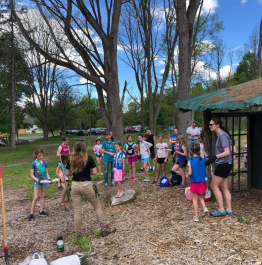
RIGHT TREE, RIGHT PLACE
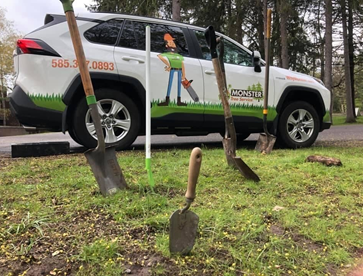
Getting shovels ready for our 2021 Arbor Day Planting with
Allendale Columbia School students!
You know the saying, "April showers bring May flowers"? Well, it's time to start choosing what flowers and trees will help your property look top notch this year! Trees provide a variety of benefits to homeowners. Deciduous trees can cool homes during the summertime and let the sun in during the winter. Evergreens can be used to block wind or create a barrier for privacy. Fruit trees and shrubs can be a great food source for people and animals. Trees can enhance the look of your property and increase its value. Picking the right tree for your yard can be challenging.
Here are some key factors in deciding what tree is right for you
and where it should be planted:
Proper Place
Make sure your tree has the appropriate space to grow. Some
species grow faster and larger than others! A lovely large shade
tree near your house can turn into a source of stress if planted in
the wrong location. It's important to research the mature size and
shape of the tree and plant the tree with proper overhead
clearance. Proper space also allows the tree to maintain its
natural shape. In addition to considering the mature size of the
canopy, you also need to consider below ground obstructions.
Research suggests that mature root systems can extended twice
the width of the canopy or more - WOW! Even though it may
look small at the nursery, don't be tricked - it may get very big!
Smaller fruit and ornamental trees can typically be planted closer
to infrastructure.
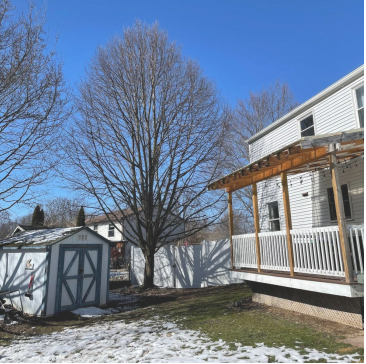
Because of where this Linden tree was planted, a 3–5-year
pruning cycle is required to prevent interference with nearby
structures.
Soil Type
You will want to select a tree that can thrive in the soil you have
on your property. Completing a soil test before selecting a tree
can be extremely beneficial in helping you narrow down the list
of species that will grow into healthy mature trees. The ratio of
sand, silt, and clay impacts the soil's ability to retain water,
nutrients, and organic matter, which are all important to the tree.
The soil pH also impacts the biology of the soil and the type of
nutrients that will be available when the tree needs them. In
summary each species has its own unique soil requirements and
a soil test is a great tool to determine soil characteristics.
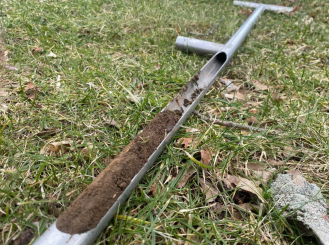
This is an example of a core soil sample taken by a soil probe.
Call your Arborist to discuss our Soil Testing Services.
Sunlight Exposure
Trees need sun to complete photosynthesis. Each species
requires a different amount of sun to create adequate food and
energy to grow. Too little or too much sun can negatively affect
the health of a tree. Once you have selected the place where you
plan to plant the tree, take note of the amount of sunlight that
part of your yard typically gets throughout the day. We love
using this helpful App that can track and identify sun exposure
using just your smart phone: Lumos App!
Water and Irrigation
Too much water, not enough water? Water is essential;
however, each species has its own level of water tolerance. A
full-grown willow prefers a wet site so it can drink hundreds of
gallons of water per day. A Honeylocust doesn't require as much
water and can tolerate long periods of dry weather. Putting a
Sugar Maple in a wetland will only lead to root decay. Site and
species selection are imperative. One thing to keep in mind if you
have an irrigation system is that it is possible to over water your
trees. You don't want to accidentally kill your trees with too much
kindness or too much water!
Aesthetics
This is many people's priority, picking the most visually important
characteristic. Do you want great fall color, spring flower, small
size, or cool shade? This is important to consider but should not
supersede putting the right tree in the right place.
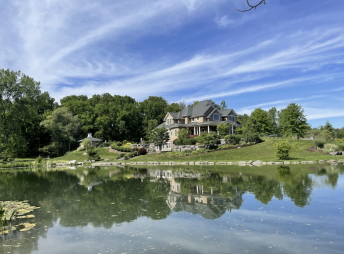
This client's property is a great example of the importance of proper
site selection. Due to the high-water table and heavy clay soils, only a
limited list of plants can thrive.
Other Considerations
Biodiversity is important! Variety is essential in minimizing the
possibility of serious pest damage and outbreaks (think Spongy
Moth, Emerald Ash Borer etc.). Too much of one species isn't
always a good thing. Promoting pollinators and plants that
provide habitat is beneficial for our environment and
neighborhoods. Trees provide a long and growing list of benefits
including minimizing pollution, filtering storm water, and reducing
urban temperatures. Some spectacular new research shows
how important trees are for our mental health: Harvard Mental
Health Research Study. Plan ahead! When planting a tree, plan
for the future and try to anticipate any additions to the house,
driveway, or any backyard renovations. Anticipating future
changes and planting your new tree in the right place can help
assure your favorite tree will be a valued part of your property for
many, many years to come.
There are over 60,000 recorded species of trees on our planet. Determining the ones that will thrive on your property can be an overwhelming task. But doing the research will make the decision a lot less intimidating. Remember to also research your hardiness zone to narrow the list down. This zone helps define what types of plants and trees will thrive in your environment.
Before you plant, remember we can help test your soil. Once you have planted your trees, our Certified Arborists can continue to help! We can provide nutrients, supplemental watering, fertilization, and proper early pruning that can help set your trees up for long term success!
Additional Resources:
Best Tree Finder: Tree Wizard
Hardiness Zones
NYS Invasive Species Database
Consult a Monster Tree Service Arborist
Monster in the Neighborhood
Last year our team spent time with local Girl Scouts planting trees in Mendon Ponds Park
Arbor Day - One of our favorite days of the year! Arbor day was first celebrated in 1872 in the state of Nebraska. By 1882 the celebration made its way into classrooms: school children started learning about the importance for trees and received a tree of their own to plant. Since then it has become an international day of appreciation for trees and all they do, although it is celebrated on different dates around the world.
This year we will be visiting Honeoye Falls-Lima Middle School to plant trees with their students. We will also be working with Williamson Central School District and the DEC Forestry Team to help develop new trails through their woods for the Elementary and Middle School students! We are thrilled to share our passion for trees with the community and foster a sense of stewardship for such essential contributors to our lives.
HAPPY ARBOR DAY!
Tree Highlight
Eastern Redbud
(Cercis canadensis)
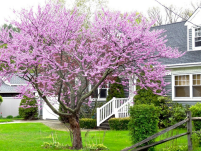
Also called: Judas tree
Lifespan: 50-75 years
ID features: Leaves- are alternate, simple, heart shaped, 3-5 inches.
Fruit & Flowers- Fruit are 2–3- inch flat legume (dried bean looking) like pods. Fruit grows in pea-like clusters, rosy- pink with a purplish tinge.
Bark- smooth and brown, but will turn gray with orange undertones in ridged and furrow as it ages. On average 15-25 feet tall.
Proper Place
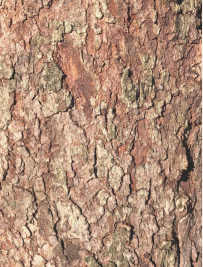
Fun facts: Eastern Redbuds are known for their showy flowers, which are enjoyed by hummingbirds and many other types of wildlife. They are also edible - we recommend Redbud Jam! Roots of Redbud tree can be used to make red dyes.
In recent year Redbuds have gained in popularity and new fun varieties like "Flame Thrower", "Merlot", "Rising Sun" and "Ace of Hearts" are our favorites!
Ask the Arborist
JASON
ISA Certified Arborist,
NY 5809A
Q: Okay, I planted my tree. Now what?
A: Water!!! For the next 2-3 years it is important to water your tree adequately and especially during hot and dry periods. The first three years are when trees will be focused on growing and embedding roots to support their canopy-- making sure that they have enough water is a must. We like to encourage heavier watering events with less frequency (more water, less often). The trick is that you do need to allow the soil to dry out some. Keeping the soil too wet could hurt more than it helps. Stick your finger in the soil for the very best test of soil moisture!!!
Q: What else can I do to help a newly planted tree?
A: A thick layer of wood-based mulch over the root system can help a lot with retaining soil moisture during the summer. Consider a Soil Program, designed specifically for your tree and your soil to help maximize root growth during this time. Lastly, don't wait to start pruning! Trees come from the nursery designed to look nice - that's not necessarily the best structure for your tree long term though!
Monthly Poll

What is your favorite springtime flowering tree?


